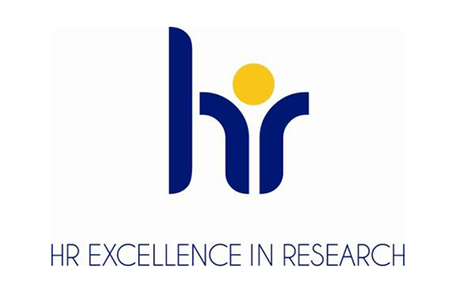Biodegradation of sustainable nonwovens used in water absorbing geocomposites supporting plants vegetation
Daria Marczak, Krzysztof Lejcuś, Joanna Grzybowska-Pietras, Włodzimierz Biniaś, Iwona Lejcuś, Jakub Misiewicz
Sustainable Materials and Technologies
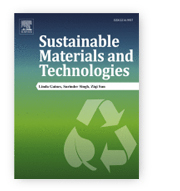 Due to the growing awareness and the need to reduce the environmental impact of textiles, there is a pressing rationale to use natural materials or fibres in environmental engineering. One solution to achieve energy sustainability is to develop sustainable technologies to gradually replace non-renewable fossil fuels. One of technology is water-absorbing geocomposite (WAG). WAG is an innovative technology that supports water management and the vegetation of plants and is used, among others, in environmental engineering and agriculture. WAG can be produced in biodegradable WAG version, which is also environmentally friendly. The paper provides an evaluation of the influence of time of installation and biodegradation on the mechanical, hydraulic, and chemical properties of used textiles. The biodegradation of geotextiles was analyzed in real time, and their parameters were determined after one vegetation season. Needle-punched nonwovens made from wool and linen or reinforced by jute mesh were biodegraded already after the first vegetation season. Significantly better mechanical properties were observed in nonwovens produced from the same materials, but reinforced by seams. All types of geotextiles were characterised by sufficient resistance to biodegradation that allowed maintaining vegetation and proper operation of WAG at least for one vegetation season. Biodegradable geotextiles installed in soil provide instantaneous protection, and their gradual discomposure fosters plant vegetation.
Due to the growing awareness and the need to reduce the environmental impact of textiles, there is a pressing rationale to use natural materials or fibres in environmental engineering. One solution to achieve energy sustainability is to develop sustainable technologies to gradually replace non-renewable fossil fuels. One of technology is water-absorbing geocomposite (WAG). WAG is an innovative technology that supports water management and the vegetation of plants and is used, among others, in environmental engineering and agriculture. WAG can be produced in biodegradable WAG version, which is also environmentally friendly. The paper provides an evaluation of the influence of time of installation and biodegradation on the mechanical, hydraulic, and chemical properties of used textiles. The biodegradation of geotextiles was analyzed in real time, and their parameters were determined after one vegetation season. Needle-punched nonwovens made from wool and linen or reinforced by jute mesh were biodegraded already after the first vegetation season. Significantly better mechanical properties were observed in nonwovens produced from the same materials, but reinforced by seams. All types of geotextiles were characterised by sufficient resistance to biodegradation that allowed maintaining vegetation and proper operation of WAG at least for one vegetation season. Biodegradable geotextiles installed in soil provide instantaneous protection, and their gradual discomposure fosters plant vegetation.
10.1016/j.susmat.2020.e00235
Tropical cyclones vertical structure from GNSS radio occultation: an archive covering the period 2001-2018
Elżbieta Lasota, Andrea K. Steiner, Gottfried Kirchengast, Ricardo Biondi
Earth System Science Data
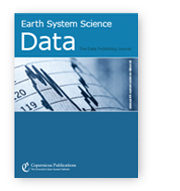 Tropical cyclones (TC) are natural destructive phenomena, which affect wide tropical and subtropical areas every year. Although the correct prediction of their tracks and intensity has improved over recent years, the knowledge about their structure and development is still insufficient. The Global Navigation Satellite System (GNSS) radio occultation (RO) technique can provide a better understanding of the TC because it enables us to probe the atmospheric vertical structure with high accuracy, high vertical resolution and global coverage in any weather conditions. In this work, we create an archive of co-located TC best tracks and RO profiles covering the period 2001-2018 and providing a complete view of the storms since the pre-cyclone status to the cyclone disappearance. We collected 1822 TC best tracks from the International Best Track Archive for Climate Stewardship and co-located them with 48 313 RO profiles from seven satellite missions processed by theWegener Center for Climate and Global Change. We provide information about location and intensity of the TC, RO vertical profiles co-located within 3 h and 500 km from the TC eye centre, and exact information about temporal and spatial distance between the TC centre and the RO mean tangent point. A statistical analysis shows how the archive covers all the ocean basins and all the intensity categories well. We finally demonstrate the application of this dataset to investigate the vertical structure for one TC example case. All the data files, separately for each TC, are publicly available in NetCDF format at https://doi.org/10.25364/WEGC/TC-RO1.0:2020.1 (Lasota et al., 2020).
Tropical cyclones (TC) are natural destructive phenomena, which affect wide tropical and subtropical areas every year. Although the correct prediction of their tracks and intensity has improved over recent years, the knowledge about their structure and development is still insufficient. The Global Navigation Satellite System (GNSS) radio occultation (RO) technique can provide a better understanding of the TC because it enables us to probe the atmospheric vertical structure with high accuracy, high vertical resolution and global coverage in any weather conditions. In this work, we create an archive of co-located TC best tracks and RO profiles covering the period 2001-2018 and providing a complete view of the storms since the pre-cyclone status to the cyclone disappearance. We collected 1822 TC best tracks from the International Best Track Archive for Climate Stewardship and co-located them with 48 313 RO profiles from seven satellite missions processed by theWegener Center for Climate and Global Change. We provide information about location and intensity of the TC, RO vertical profiles co-located within 3 h and 500 km from the TC eye centre, and exact information about temporal and spatial distance between the TC centre and the RO mean tangent point. A statistical analysis shows how the archive covers all the ocean basins and all the intensity categories well. We finally demonstrate the application of this dataset to investigate the vertical structure for one TC example case. All the data files, separately for each TC, are publicly available in NetCDF format at https://doi.org/10.25364/WEGC/TC-RO1.0:2020.1 (Lasota et al., 2020).
10.5194/essd-12-2679-2020
Presence of egc-positive major clones ST 45, 30 and 22 among methicillin-resistant and methicillin-susceptible oral Staphylococcus aureus strains
Ewa Kwapisz, Katarzyna Garbacz, Maja Kosecka-Strojek, Justyna Schubert, Jacek Bania, Jacek Międzobrodzki
Scientific Reports
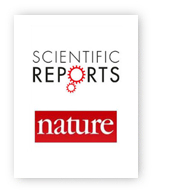 The oral cavity may comprise a significant reservoir for Staphylococcus aureus but the data on molecular epidemiology and clonal distribution of oral strains are really scarce. This study aimed to evaluate the clonal relatedness in S. aureus isolated from oral cavity and their relationship with carriage of virulence genes, and antimicrobial resistance profiles. A total of 139 oral S. aureus isolates were obtained from 2327 analysed oral samples of dental patients. Antimicrobial susceptibility testing was performed. Isolates were characterized using protein A gene (spa) typing, spa-CC clonal complexes, toxin genes and SCCmec typing for MRSA. High resistance rates for penicillin, tetracycline and gentamicin were detected, respectively 58.3%, 42.4%, and 35.2%. Twelve (8.6%) S. aureus isolates were identified as MRSA. All of MRSA isolates were mecA-positive and mecC-negative. SCCmec IV was the most common type (66.7%), which was typical for community-acquired MRSA (CA-MRSA). Overall, the enterotoxin gene cluster (egc) was the most frequent detected virulence factor (44.9%), both in MSSA and MRSA isolates. Presence of genes encoding for the enterotoxins (sea, seb, sec, seh, sek), exfoliative toxin A (eta), and toxic shock syndrome toxin-1 (tst) was also observed. Strains carrying lukS-PV/lukF-PV genes belonged to SCCmecV- spa type t437. The most prevalent spa types were t091, t015, t084, t002, t571, and t026 among all 57 identified. Spa types, including 3 new ones, grouped in 6 different spa-CC clonal complexes, with four major dominated; CC45, CC30, CC5, and CC15. This study demonstrated that both methicillin-susceptible and methicillin-resistant major European clones of S. aureus could be isolated from the oral cavity of dental patients, with the emergence of PVL-positive CA-MRSA strains. The oral cavity should be considered as a possible source of toxigenic egc-positive S. aureus strains, in terms of potential risk of cross-infection and dissemination to other body sites.
The oral cavity may comprise a significant reservoir for Staphylococcus aureus but the data on molecular epidemiology and clonal distribution of oral strains are really scarce. This study aimed to evaluate the clonal relatedness in S. aureus isolated from oral cavity and their relationship with carriage of virulence genes, and antimicrobial resistance profiles. A total of 139 oral S. aureus isolates were obtained from 2327 analysed oral samples of dental patients. Antimicrobial susceptibility testing was performed. Isolates were characterized using protein A gene (spa) typing, spa-CC clonal complexes, toxin genes and SCCmec typing for MRSA. High resistance rates for penicillin, tetracycline and gentamicin were detected, respectively 58.3%, 42.4%, and 35.2%. Twelve (8.6%) S. aureus isolates were identified as MRSA. All of MRSA isolates were mecA-positive and mecC-negative. SCCmec IV was the most common type (66.7%), which was typical for community-acquired MRSA (CA-MRSA). Overall, the enterotoxin gene cluster (egc) was the most frequent detected virulence factor (44.9%), both in MSSA and MRSA isolates. Presence of genes encoding for the enterotoxins (sea, seb, sec, seh, sek), exfoliative toxin A (eta), and toxic shock syndrome toxin-1 (tst) was also observed. Strains carrying lukS-PV/lukF-PV genes belonged to SCCmecV- spa type t437. The most prevalent spa types were t091, t015, t084, t002, t571, and t026 among all 57 identified. Spa types, including 3 new ones, grouped in 6 different spa-CC clonal complexes, with four major dominated; CC45, CC30, CC5, and CC15. This study demonstrated that both methicillin-susceptible and methicillin-resistant major European clones of S. aureus could be isolated from the oral cavity of dental patients, with the emergence of PVL-positive CA-MRSA strains. The oral cavity should be considered as a possible source of toxigenic egc-positive S. aureus strains, in terms of potential risk of cross-infection and dissemination to other body sites.
10.1038/s41598-020-76009-1
The Characteristics of Swelling Pressure for Superabsorbent Polymer and Soil Mixtures
Jakub Misiewicz, Arkadiusz Głogowski, Krzysztof Lejcuś, Daria Marczak
Materials
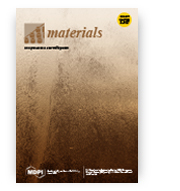 Superabsorbent polymers (SAPs) are used in agriculture and environmental engineering to increase soil water retention. Under such conditions, the swelling pressure of the SAP in soil affects water absorption by SAP, and soil structure. The paper presents the results of swelling pressure of three cross-linked copolymers of acrylamide and potassium acrylate mixed at the ratios of 0.3%, 0.5% and 1.0% with coarse sand and loamy sand. The highest values of swelling pressure were obtained for the 1% proportion, for coarse sand (79.53 kPa) and loamy sand (78.23 kPa). The time required to reach 90% of swelling pressure for each type of SAP differs. Samples of coarse sand mixed with SAP K2 in all concentrations reached 90% of total swelling pressure in 100 min, while the loamy sand mixtures needed only about 60 min. The results were the basis for developing a model for swelling pressure of the superabsorbent and soil mixtures, which is a fully stochastic model. The conducted research demonstrated that the course of pressure increase depends on the available pore capacity and the grain size distribution of SAPs. The obtained results and the proposed model may be applied everywhere where mixtures of SAPs and soils are used to improve plant vegetation conditions.
Superabsorbent polymers (SAPs) are used in agriculture and environmental engineering to increase soil water retention. Under such conditions, the swelling pressure of the SAP in soil affects water absorption by SAP, and soil structure. The paper presents the results of swelling pressure of three cross-linked copolymers of acrylamide and potassium acrylate mixed at the ratios of 0.3%, 0.5% and 1.0% with coarse sand and loamy sand. The highest values of swelling pressure were obtained for the 1% proportion, for coarse sand (79.53 kPa) and loamy sand (78.23 kPa). The time required to reach 90% of swelling pressure for each type of SAP differs. Samples of coarse sand mixed with SAP K2 in all concentrations reached 90% of total swelling pressure in 100 min, while the loamy sand mixtures needed only about 60 min. The results were the basis for developing a model for swelling pressure of the superabsorbent and soil mixtures, which is a fully stochastic model. The conducted research demonstrated that the course of pressure increase depends on the available pore capacity and the grain size distribution of SAPs. The obtained results and the proposed model may be applied everywhere where mixtures of SAPs and soils are used to improve plant vegetation conditions.
10.3390/ma13225071








